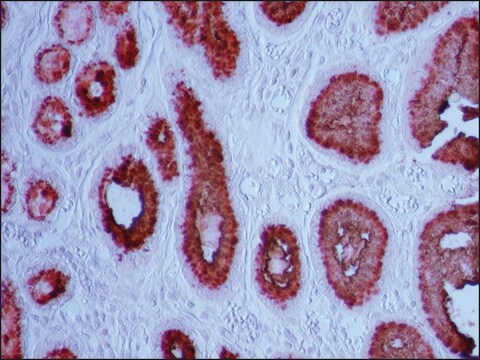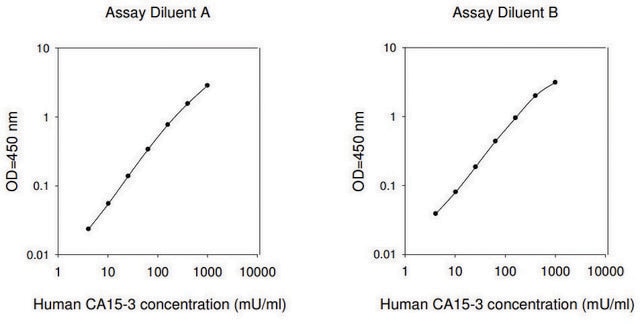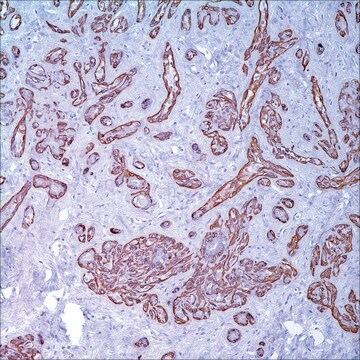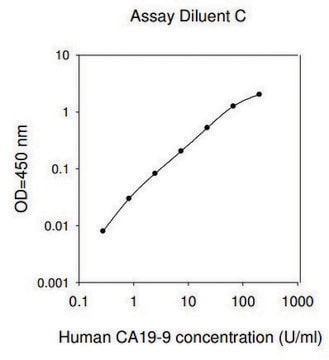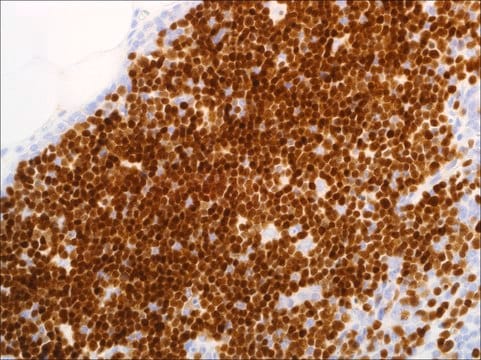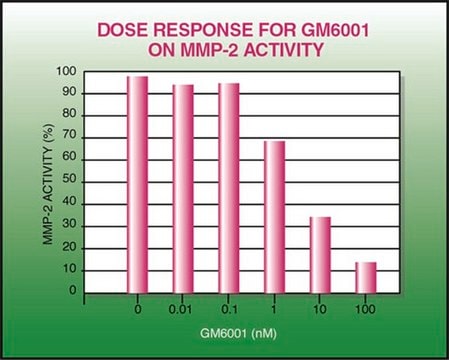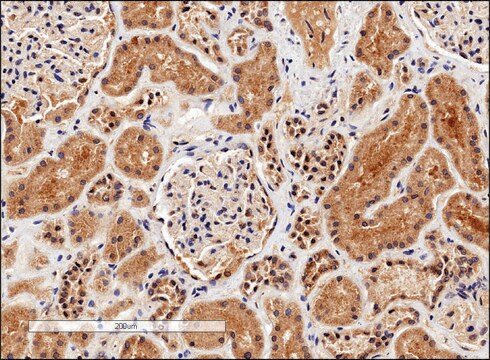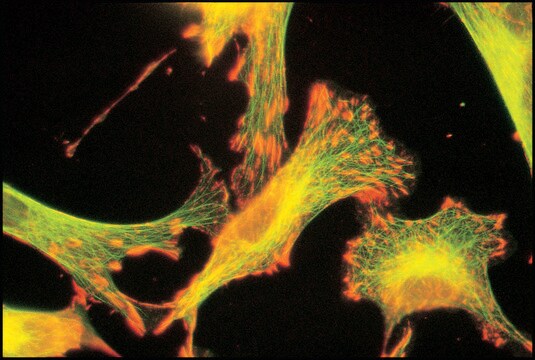Recommended Products
Specificity
Clone 452 specifically detects Aminopeptidase N (CD13) in human cells.
Application
Anti-Aminopeptidase N (CD13), clone 452, Cat. No. MABF2147, is a mouse monoclonal antibody that detects Aminopeptidase N and has been tested for use in Flow Cytometry, Immunocytochemistry, Immunoprecipitation, Agonist function, and Western Blotting.
Flow Cytometry Immunocytochemistry Immunoprecipitation Agonist or Inhibitor Western Blotting
Immunocytochemistry Analysis: A representative lot detected Aminopeptidase N (CD13) in Immunocytochemistry applications (Rahman, M.M., et. al. (2014). Front Physiol. 4:402; Subramani, J., et. al. (2013). J Immunol. 191(7):3905-12).
Flow Cytometry Analysis: A representative lot detected Aminopeptidase N (CD13) in Flow Cytometry applications (Subramani, J., et. al. (2013). J Immunol. 191(7):3905-12).
Western Blotting Analysis: A representative lot detected Aminopeptidase N (CD13) in Western Blotting applications (Rahman, M.M., et. al. (2014). Stem Cells. 32(6):1564-77; Rahman, M.M., et. al. (2014). Front Physiol. 4:402).
Agonist Analysis: A representative lot induced a temporal increase in phosphorylation of FAK, ERK and Src kinases in U937 cells. (Subramani, J., et. al. (2013). J Immunol. 191(7):3905-12).
Immunoprecipitation Analysis: A representative lot immunoprecipitated Aminopeptidase N (CD13) in Immunoprecipitation applications (Subramani, J., et. al. (2013). J Immunol. 191(7):3905-12).
Flow Cytometry Analysis: A representative lot detected Aminopeptidase N (CD13) in Flow Cytometry applications (Subramani, J., et. al. (2013). J Immunol. 191(7):3905-12).
Western Blotting Analysis: A representative lot detected Aminopeptidase N (CD13) in Western Blotting applications (Rahman, M.M., et. al. (2014). Stem Cells. 32(6):1564-77; Rahman, M.M., et. al. (2014). Front Physiol. 4:402).
Agonist Analysis: A representative lot induced a temporal increase in phosphorylation of FAK, ERK and Src kinases in U937 cells. (Subramani, J., et. al. (2013). J Immunol. 191(7):3905-12).
Immunoprecipitation Analysis: A representative lot immunoprecipitated Aminopeptidase N (CD13) in Immunoprecipitation applications (Subramani, J., et. al. (2013). J Immunol. 191(7):3905-12).
Features and Benefits
Isolated human dermal fibroblasts.
Storage and Stability
Stable for 1 year at -20°C from date of receipt. Handling Recommendations: Upon receipt and prior to removing the cap, centrifuge the vial and gently mix the solution. Aliquot into microcentrifuge tubes and store at -20°C. Avoid repeated freeze/thaw cycles, which may damage IgG and affect product performance.
Analysis Note
Purified mouse monoclonal antibody IgG1 in PBS without azide.
Other Notes
Aminopeptidase N (UniProt: P15144; also known as EC:3.4.11.2, AP-N, hAPN, Alanyl aminopeptidase, Aminopeptidase M, AP-M, Microsomal aminopeptidase, Myeloid plasma membrane glycoprotein CD13, gp150, CD13) is encoded by the ANPEP (also known as APN, CD13, PEPN) gene (Gene ID: 290) in human. Aminopeptidase N is a single-pass type II membrane protein that is also found as a soluble form in cells. It is widely expressed as a homodimer of 280 kDa on the cell surface in many tissues, including intestinal epithelia and the nervous system. It serves as a broad specificity aminopeptidase that plays a role in the final digestion of peptides generated from hydrolysis of proteins by gastric and pancreatic proteases. It preferentially cleaves N-terminus neutral amino acids, most notably alanine residue. Aminopeptidase N is involved in many physiological processes, including antigen presentation regulation, differentiation, proliferation, apoptosis, cancer metastasis, and angiogenesis. It is also involved in the processing of various peptides including peptide hormones, such as angiotensin III and IV, neuropeptides, and chemokines. Human Aminopeptidase N consists of a short N-terminal cytoplasmic end (aa 2-8), a transmembrane domain (aa 9-32), and a large extracellular portion (aa 33-967), which is composed of a Ser/Thr-rich region (aa 33-68) and the metalloprotease domain (aa 69-967).
Evaluated by Flow Cytometry in U937 cells.
Flow Cytometry Analysis: 1 µg of this antibody detected Aminopeptidase N (CD13) in one million U937 cells.
Flow Cytometry Analysis: 1 µg of this antibody detected Aminopeptidase N (CD13) in one million U937 cells.
Unless otherwise stated in our catalog or other company documentation accompanying the product(s), our products are intended for research use only and are not to be used for any other purpose, which includes but is not limited to, unauthorized commercial uses, in vitro diagnostic uses, ex vivo or in vivo therapeutic uses or any type of consumption or application to humans or animals.
Not finding the right product?
Try our Product Selector Tool.
Certificates of Analysis (COA)
Search for Certificates of Analysis (COA) by entering the products Lot/Batch Number. Lot and Batch Numbers can be found on a product’s label following the words ‘Lot’ or ‘Batch’.
Already Own This Product?
Find documentation for the products that you have recently purchased in the Document Library.
Our team of scientists has experience in all areas of research including Life Science, Material Science, Chemical Synthesis, Chromatography, Analytical and many others.
Contact Technical Service